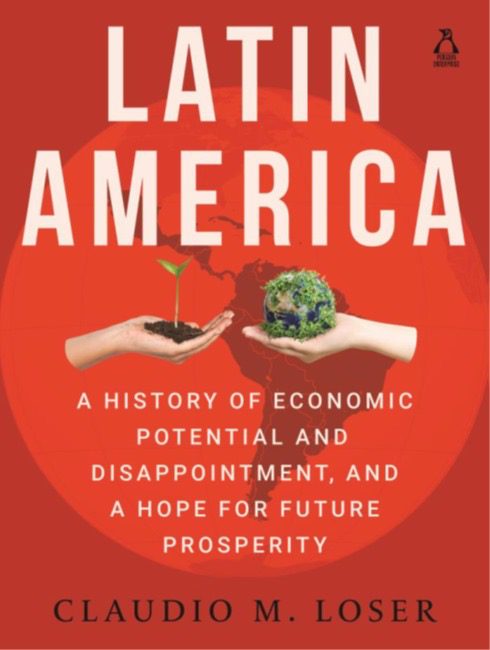New Book on Latin America

Latin America: A history of Economic Potential and Disappointment, and a Hope for Future Prosperity.
Latin America and the Caribbean remain a puzzle. The region has withstood well recent world events; it has generally succeeded in achieving low inflation and a reasonable external position. However, despite its great human and natural resources, the region has fallen behind most other emerging regions. This book seeks to explore where Latin American and the Caribbean is coming from; where it is now; how did it get to this point, and where it is going. Is there one story or several, both geographically and over time? The book seeks to answer these and other questions, at least in part. The points of view presented emphasize economics, but with an understanding of the complex social, political, and even philosophical issues that underlie the existing problems. With such background, a successful journey confronts considerable obstacles, but hopefully, the reader has the patience to go through the process.
The book starts with an overview of where the regional economy is today, both with respect to its past and to the rest of the world. It discusses the region’s shortcomings in terms of performance, mainly in the economic area but also in terms of other important human development indicators such as education, health, poverty, and income distribution. Macroeconomic problems frequently have reflected a dubious economic model, but also a lack of unwillingness to accept the inevitable constraints on the economy of fiscal, monetary and exchange policies. Improved policies in recent years at least explain the reduction of inflation and improved balance of payment management, with sad exceptions. The role of the IMF is also part of the discussion.
The book covers the role of international trade, including commodity price volatility. It also discusses the growing links to China in recent years. Productivity gains—as encapsulated in total factor productivity—are also a major concern. Other important issues are the strengths of human capital, demographic developments, climate, and their implications for the future, with possible consequences for poverty and equity. Furthermore, the book reviews some of the institutional and political aspects that explain its behavior over time.
Within the limits on predictions, the book explores various scenarios emerging from the Centennial Growth Model (CGM), in the context of the world economy. In the last chapter it develops various proposals for change, focused on productivity, competitiveness, inclusion, and income inequality, as well as two key items: macroeconomic policies, as well as global cooperation.
This book would not have been possible without previous EMF work and the help of many people, including, centrally, Jose Fajgenbaum and Harinder Kohli, as well as Enrique García, Anil Sood, Rajat Naj, Hasan Tuluy, Ieva Vilkelyte, Laura Sheldon, Harpaul Kohli, and Nicole Lippmann. And certainly, without him even trying, Michel Camdessus.
